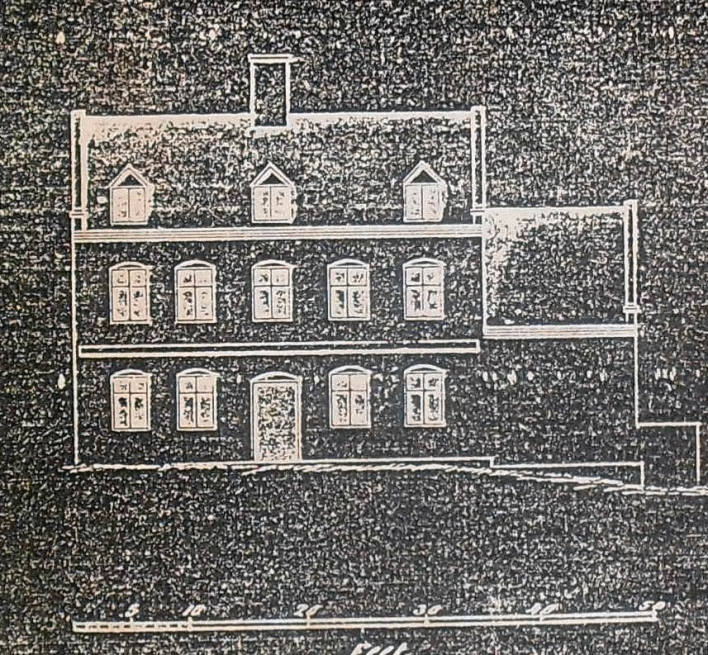

Elevation and plan of 41 Coleshill Street by John Snape, 1763. The internal layout of the house seems at odds with the orderly Georgian frontage.
Snape’s 1763 survey of the Hacket lands includes an elevation of the house in Coleshill Street, showing a handsome symmetrical Georgian facade with twelve windows, thirty-six feet in length. The style suggests that it was probably built in the 1720s, although it may be a thoroughly modernised earlier building, with the interior layout unchanged. The accompanying plan shows that there was a cellar and that the building to the right of the house was a stable.
The house has the appearance of a gentleman’s residence, but according to the survey, the tenant of the house in 1763 was a farmer, Thomas Woodhouse, and the plan shows a large barn at the back of the property. The barn was connected to the house by a long range of building occupied by a large malthouse, a kiln and a mill house, in effect a small brewery, with steps down as the land falls away. These buildings at the back of the house were no doubt added at the request of the yeomen tenants when the building ceased to serve as the Hacket’s town house. In 1782 Andrew Hacket IV was residing in Sutton Coldfield, but perhaps not at this property if it had sunk to the condition of a farmhouse.
The 1824 Corn Rent schedule gives the owner of the house as Mary Pimlott, who was also the occupier; the tenant of the malthouse part of the property was Edward Lambley, a publican. The house had probably been sold when F.B.Hacket of Moor Hall was in financial difficulty, and either he or Mary Pimlott made some drastic alterations, altering the front of the house so that there were only five windows instead of twelve, thus avoiding payment of the window tax levied on houses of seven windows and more.
The owner/occupier in the 1850s was Charles Smith - Richard Holbeche remembered him as “old Charles Smith, a genial and kindly man who had driven the Birmingham and Sutton coach”. According to the census of 1851 Smith was 61 years old, and his occupation was given as “Malster”, so the brewery at the back of the house must still have been in use. He had developed several other properties, so could afford to live well.
After another hundred years the house was showing its age, the last family to live there, the Clemmows, moved out in 1955 and the building was demolished shortly afterwards.
